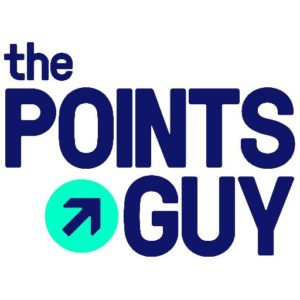For Runners & Other World Travelers
Intro
Fellow runners and travelers sometimes ask me on the fly for advice based on my experiences with marathons, running health, injury prevention, travel planning, and even on how to make training more interesting. I may not always have the best answers ready, so below, I’ve put together a list of some things I have found useful which might be helpful to you, as well. This list is not exhaustive and I will probably be adding things to it as I come across them. So, if you have any suggestions (or questions), please feel free to email me at paul@seepaulrun.com.
General Info on Running
If you’re anything like me and interested in seeing things in “the big picture”, you might want to explore just what running is, how our bodies are made to move, and why running is natural — even crucial — to the history of our survival as a species. For a a fascinating read that is part cultural anthropology, part metaphysical, and part epic adventure story, check out Christopher McDougall’s best-selling book “Born to Run: A Hidden Tribe, Superathletes, and the Greatest Race the World Has Never Seen”. Written in a style that reminds me of an NPR or Sports Illustrated feature story, McDougall’s tale is full of interesting facts and great plot twists, all while being humorous and enlightening. Don’t turn you nose up at it based on its lengthy, convoluted title. When I got past that and followed the suggestions of several friends to read this (actually, you might rather want to listen to it as an audiobook while you are running, as I did) I found it to be eye-opening, possibly even life-changing! 🙂 Seriously, it’s such an atypical, entertaining running story, word is that a Hollywood adaptation is now being made starring Matthew McConaughey.
Book Born to Run
Christopher McDougall’s page-turner “Born to Run: A Hidden Tribe, Superathletes, and the Greatest Race the World Has Never Seen”
Running and Running Form
Learning a technique for good running form is often the secret to longevity, efficiency, injury prevention, and if you’re into it, increased speed. While I can’t say I’ve never had any of the simple injuries like calf soreness and plantar fasciitis (usually due to overtraining when I was starting out), I can say that these days I never get shin splint nor have I ever suffered from any of those dreaded knee problems other runners complain of.
I have to credit Pose Method and ChiRunning for helping me to avoid that. Pose — invented by sports scientist and two-time Olympic coach, Nicholas Romanov, as well as its close cousin, ChiRunning, created by ultra-marathoner, Danny Dreyer — each stress the benefits of proper form, posture, and balance. While they do have their differences (Pose to me seems more pragmatic and mechanical, while ChiRunning tends to add emphasis to mental focus) both can be be taught and learned through drills and exercises. I started with Pose precisely because I had suffered from shin splints in my younger days and was tired of that particular injury showing up to surprise and ruin my simple attempts to run. I took a free class in Pose that my health club offered, read some books on the subject, and even found a certified coach (Greg Close of TriBy3 and later, Coach Joe Bachana, both in NYC) to show me the finer points. Along the way, I also learned about ChiRunning, such that I am pretty sure today I may be borrowing a little from both techniques. They do, of course, overlap in their pursuit of the same goals, which is to make running feel more natural, less injury-prone, and more enjoyable.
Pose Method Running
Resources on Pose Method Running by Nicholas Romanov
Resources on ChiRunning
Resources on ChiRunning by Danny Dreyer
Running Health & Injury Prevention
These may not be what you would call coffee table books, but they are full of clear illustrations on your skeletal and musculature systems, have great sports medicine and running health information, and are handy to have around as references when you need them (or maybe even to help you fall asleep). If you want to “know” what’s going on inside there in the amazing machine that is your body, these resources are going to make it easier for you.
Running Health and Injury-Prevention Resources
Good reference books for understanding physiology, running health, and injury prevention,
Traveling Smart / Traveling Efficiently
Traveling for marathons is often necessary and always exciting. But it can also be expensive and time-consuming, which is why I’ve become an avid student of traveling well but inexpensively, making credit card points, airline and hotel rewards, and shopping portals work to my advantage. With a little reading and a bit of strategy—even getting a daily email feed offering valuable advice and travel bargains—anyone can become a master travel planner so that no marathon, no matter how exotic or far away, is beyond your reach.
Ultimate Guide to Travel Hacking
“The Ultimate Guide to Travel Hacking” by Matt Kepnes is an e-book you download, read in about 2-hours, refer back to as a reference book, and watch what you’ve learned help you rack up travel reward points. Knowing that there are perfectly legit tricks to maximizing rewards (which is how I pay for MOST of my travel, believe it or not) has changed the way I approach anything, travel- or purchase-related, in my life.
The Points Guy
The Points Guy keeps you updated on credit card offers, airline and hotel points deals, and when and how to best utilize the points you are collecting.
Cashback Monitor
Don’t let the name “Cashback Monitor” throw you off course; you don’t want cash, you want travel reward points. While the site does track offers for the former, it has fantastic comparison tables for Shopping Portals. What that means is, if you’re planning to buy office supplies, it will show you which airline, hotel, or credit card portal (meaning you enter, say, Staples or OfficeMax’s sites through United Airlines’ points mall, for example) gives the highest points. This means that, since you were already going to buy those file folders anyway, you can go through the best shopping portals you choose and automatically get 3x or 5x the points for each dollar spent with that program. This is an easy way to get points for doing nothing that you weren’t already doing, plus sometimes the multiplier amount is extraordinary. I’ve sometimes seen offers for sending flowers–when I was already on my way to buying them–for as much as 30x/$ spent!
Scott’s Cheap Flights
Scott’s Cheap Flights – a spam-free email every day notifying you of special fares and airline mistakes!
Rick Steves
Pretty much anything written by Rick Steves (he has podcasts, videos, and even a travel service now) is going to be informative and efficient for travel. While he mostly focuses on Europe, he’s got a lot to say about a lot of places and he sets a pattern for you to start thinking like a world traveler.
1,000 Places to See Before You Die
Just for fun, a book like “1,000 Places to See Before You Die” by Patricia Schultz , makes an interesting coffee table reference AND can help you get inspired to check out places you never knew you’d always wanted to see!
How to Make Training More Fun: Listen and Learn
Sure, music is great to listen to while running. It can relax you into a meditative state or pump you up with inspiration and energy. But let’s be honest, it’s a difficult burden to place on your Spotify, Apple Music, or your own playlists to keep you entertained for every training run. It’s especially on those really long weekend runs or when you have to get your miles in under extreme weather conditions like rain, snow, or during a heat wave.
That’s where audiobooks and podcasts come in. Unlike music from which you (or your ears) may tire after a certain threshold is met, there is no limit in the variety that you can listen to, from weekly talks shows or a good novel or suspense audiobook, from foreign language newscasts* (see section below), to a fully developed lecture series on any number of academic subjects.
Mix it up a bit! Getting hooked on a regular podcast or looking forward to the next chapter in a good mystery — which you might only reserve for your running time — not only gives you something to look forward to, it also helps you to forget about boredom and bodily fatigue as you watch the miles go by.
iTunes
If you don’t already know about and use iTunes, then let me just point out that, according to Apple, iTunes now offers over 250,000 unique podcasts in as many as 100 different languages on every imaginable subject. Whether you love or hate Apple, you have to give them credit for iTunes as a vast library of resources. With access to it, you can NEVER be bored while running, listening to any number of podcasts you can get here…for FREE!

The Great Courses
The Great Courses (by The Teaching Company) is a huge catalogue of college-level audio courses (with no grades and no homework!). They essentially find academics who are particularly interesting and entertaining to listen to and develop entire lecture series on any topic you can think of from the history of Western Civilization to the lives of the great composers. Once you’ve ordered something from them, they also usually send you info on their frequent sales which can be as much as 70% off the list price. More serious and substantial then your average podcasts, these lecture series can fill in the gaps on anything you’ve ever wanted to explore more deeply…and you can learn about them–not in a stuffy classroom– but while running!
Make Travel Even More Interesting: Learn a New Language While You Run
Picking up from the section above on how to make training more fun, one of the more interesting things you can do for yourself with all that time you’ll have running outdoors, is to learn some foreign languages. I’ve been studying German, French and Spanish, in part this way, and can now have a full conversation in German, a decent, though messy conversation in French, and have grasped enough to get by with in a basic command of Spanish. All of it, or any amount you can pick up, makes speaking and reading those languages much more interesting and engaging while traveling to places where they’re spoken.
The good news is this: in today’s Internet-rich world of podcasts, audiobooks, YouTube, and Skype, there has literally NEVER been a better or easier time in all of history to learn a new language. Now, while you may not get everything you need just from listening to materials while you run (after all, IF you find yourself becoming more serious about your language learning past the “tourist level”, there is reading, writing, grammar, and conversation which you will need to attend to) your running time automatically offers you plenty of time alone with which to practice important aspects like listening and accent improvement.
Best of all, when you’re running outside, you get to repeat things out loud when listening to native speakers on your earbuds. Unlike being in other public places, like sitting on a train or a park bench, strangers who hear you as you speed past them, will rarely think you’re annoying or crazy. To them, you’re just having a Bluetooth phone conversation with someone in your own exotic, different language, especially since the odds are they won’t be familiar with the Portuguese words for “what time does the train arrive?”. In all likelihood, to them you could be negotiating an important business deal with a colleague in Rio!
Now, a word in favor of “audio” training which you can do while running, in contrast to “visual/reading” learning, which you need to do sitting at a desk, focused on nothing else. A lot of proverbial ink has been spilled on whether methods like Rosetta Stone work well, in which you mainly watch simple images and move your mouse. My opinion is that methods like these are limited at best, and gimmicks at worst. It’s not that the concept of learning foreign words through imagery is flawed. It’s not. In fact, this is not only how our brains are wired to learn language as small children, but there’s also a far stronger chance that you’ll be able to communicate in your new language if you learn to skip the “translating” words into English and instead just pull up the image of, for example, a cat, and instantly associate it with the word for it in your new language. To take that further, there is an equally good chance you will learn to correctly perceive the sounds of word and sentence patterns, not to mention a correct accent, if you turn off the imagery and reading part and learn to listen to native speakers. This is what we did as children, too, but as adults, we can use that latent skill to go much further, eventually listening to the daily news, pop music, or “radio-play” dramas in our new language.
The problem I find with designer-packaged, heavily marketed programs like Rosetta Stone, is that they’re: a) exorbitantly expensive; b) don’t really get you beyond the most basic of simple words with which you’ll never really be able to form useful sentences nor realistic, conversational phrases; and c) are totally unnecessary given that there are so many better and far less expensive options out there…many of them for free.
Below are a few of my favorite resources.
Fluent U
“The Top 15 Language Learning Podcasts for Curious Multilingual Minds” from FluentU
Fluent Forever
“Fluent Forever” by Gabriel Wyner is an excellent book to listen to or read for anyone just about to start study of a foreign language. As an opera singer, Wyner had to learn several languages (Italian, French, German, Russian, for starters) and in the process developed ingenious and up-to-Internet-date modern methods for taking shortcuts. I suggest looking at this BEFORE or while at the beginning of your time spent learning a new language. It will save you lots of time and frustration.
Italki
Italki: a community-base site that allows you practice 1-on-1 online lessons with native language speakers… for as little as $10/hr!
Pimsleur
Pimsleur is an audio-based language learning method developed back in the 1960’s. While it sometimes gets flack for drilling material into you before letting you get into new stuff, it’s solid and well-respected. In fact, it’s the foundation of what the U.S. State Department uses to train its foreign service personnel.







